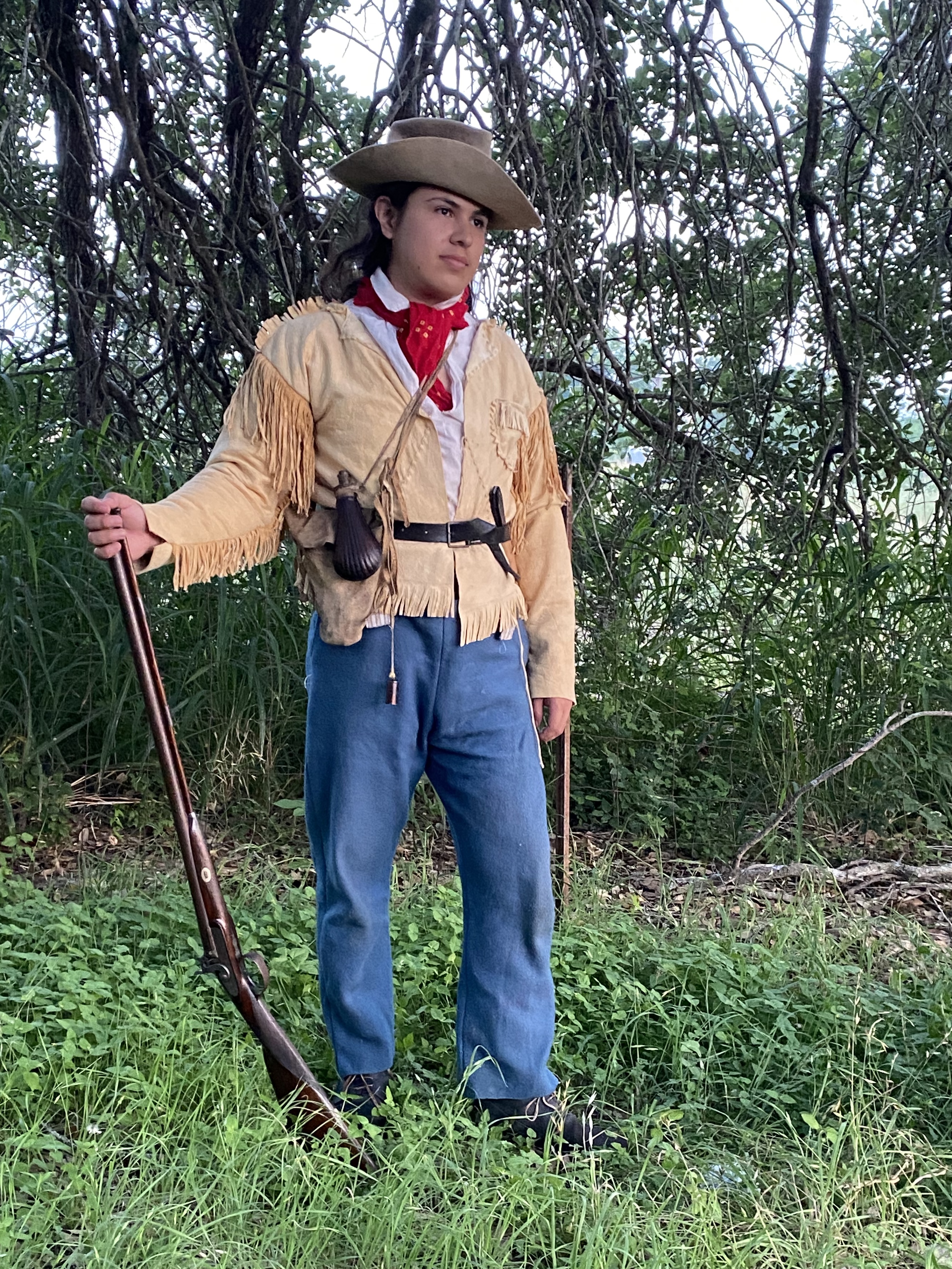Braiding a Rawhide Quirt
- David Sifuentes

- May 17, 2021
- 4 min read

Nineteenth century Texas was unquestionably shaped by horse and rider. Be it vaquero, cowboy, ranger, or your everyday character just needing to go somewhere. Most everyone is familiar at least in a precursory sense with the most essential horse tack; bit, reins, and saddle, but hanging off the wrist or saddle horn of many a rider was a short whip with a little history in it’s manufacture, the quirt.
Leather work and braiding was a skill well known to the old world Phoenicians, who would impart their knowledge to the North African Moors whom they had conquered. The Moors were adept horsemen and the knowledge gained from their Phoenician foes was permanently imparted within their own material culture. The Moorish armies crossed into Spain in the early eighth century, and they established a kindom that would last for centuries. It was during this time that the Spaniards would learn to produce some of the finest leather known to the world, a reputation still held today. The Moors were finally routed from Spain at the dawning of the age of Western Exploration, but their skills and knowledge remained. When Hernan Cortes brought the first horses to America they most assuredly were outfitted with tack and braiding developed through this unbroken line. The Conquistadors would teach these skills to the natives and leather and rawhide braiding took a firm grip on the Mexican and eventually Western identity.
Rawhide makes a superb material for braiding. It wears like iron, and is easily worked when properly prepared. The selected skin once removed and fleshed would be stretched on a frame till dry, at this point the braider would begin dehairing or start cutting a long strip working continuously around the edge of the skin dehairing the strip when finished. The strip of rawhide would be meticulously sized and pared with merely a knife and cunning skill. For those wishing to follow this meager guide it might serve best to buy prepared lace. A comprehensive book covering all the techniques of this article will be listed at the end.
Things you’ll need:
40 yards of 1/4” rawhide lace
water
a long thin piece of leather and a rectangular scrap
a piece of thick veg tan leather
artificial sinew
a knife
an awl
The first step is to form the quirt’s core, this is merely a long tapering piece of leather the length of your finished braid. This strip is bound with artificial sinew to form a tapering tubular shape.

Before braiding the rawhide it must first be soaked in water to be made pliable. The final dampness is key to a good braid, too wet and the lace stretches, too dry and it’s hard to work.
Take four strands and begin braiding them around the core in a four strand round braid. A braided strand normally loses a third of its length so factor this when cutting the lengths. When done tie the ends off with a knot of sinew.

This braid will initially look rough, this can be fixed by rolling it underneath and against two smooth flat surfaces, like two pieces of fine grained wood. Note the difference in this next photograph.

Overtop of this braid, braid a second layer of rawhide, this time with twice as many strands, making it a eight strand plait. When done, again knot the end with sinew and roll out to smooth.


This next step will be to braid the eye on the end of the plaiting. This is achieved by taking eight strands TWICE as long as the previous calculations. Start in the center and braid a piece about four inches long. Double this braiding over on the skinnier part of your original core, splicing this eye together over the core is the most aggravating part of this project. The author admits to taking much time in doing and redoing this until the final experiment was satisfactory.

Now again plait these sixteen strands until you have reached the base. Knot the end with sinew and roll the final overlay. Chop the base strands cleanly with a sharp knife

A strip of thick leather is used for the final fall of the quirt. The piece is tapered in the center to more easily fit the eye splice and two slits are cut into it so it can be woven into itself securing it in place.

Around the base, a thin piece of leather is wrapped to thicken the handle, This leather is securely bound with sinew. A wrist strap may or may not be added at this point, if so, the flatly braided strap is secured in place with more sinew binding. The length and width of your handle will determine how many bits and passes will be needed to complete the handle knot. This again is slow going, aggravating work, it should finally be bested with patience and good use of an awl to fit the lace when things get tight. Once complete the maker can proudly behold his new tool, and perhaps contemplate the the wide array of cultures by which it came about.

All the braids and techniques mentioned in this article can be found in an easy web search and the author certainly can go into greater depth if requested, but if one wishes to learn all the ropes (pun intended) of rawhide and leather braiding then the author highly reccommends Bruce Grant’s Encyclopedia of Rawhide and Leather Braiding, it’s a trove of information for those who’s interest is piqued in this timeless skill of the southwest and of Texas.
https://archive.org/details/Encyclopedia_Of_Rawhide_And_Leather_Braiding/mode/1up




Comments